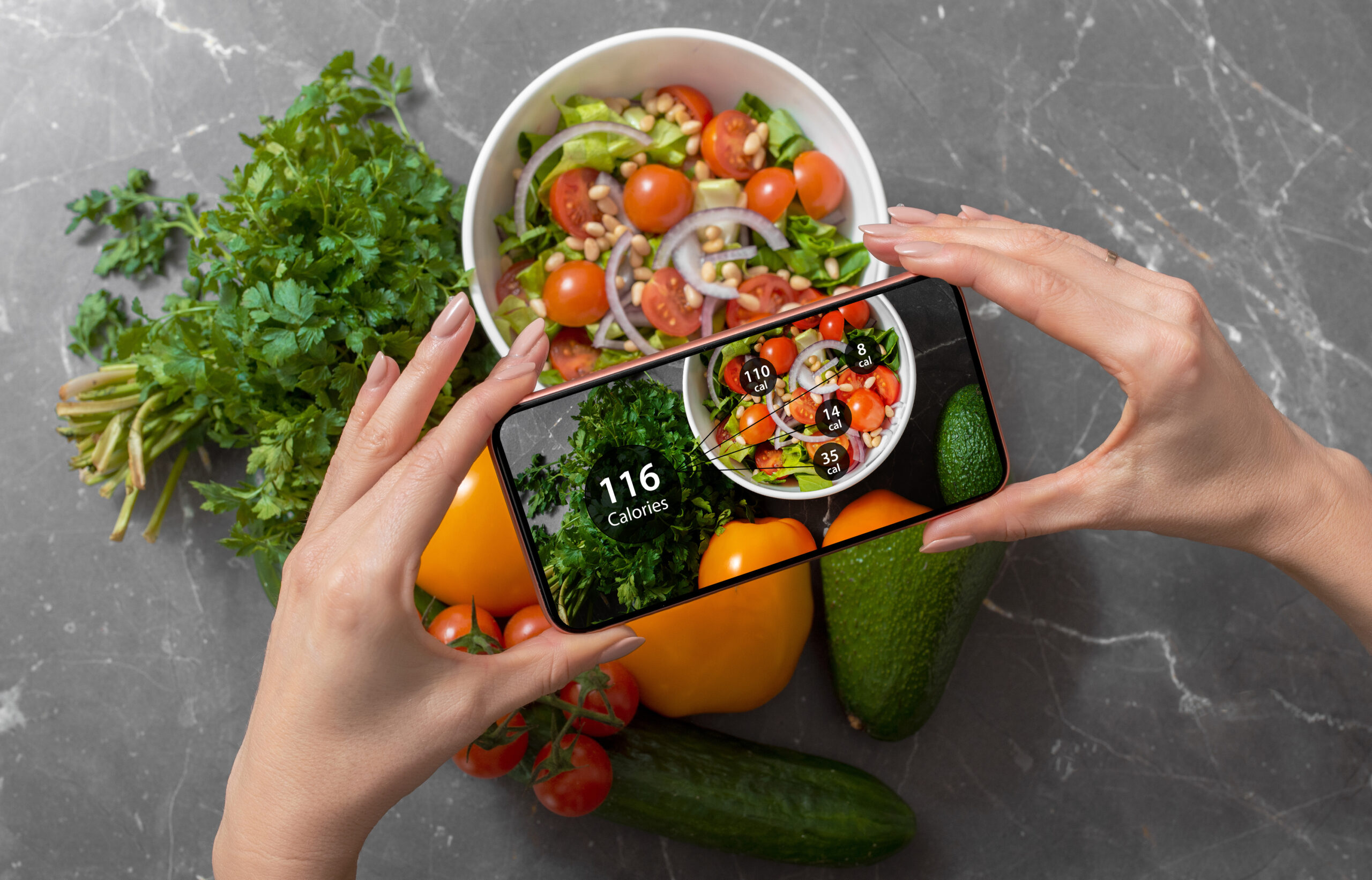In business, accountability and metrics are important. How is a company supposed to know if it is meeting its goals and gains if there is no understanding of daily, weekly, quarterly sales? Similarly, fitness goals also need measurable metrics. But what are the right ones, and how should you track them? The #fitprofessional is here to help.
NOTE: This is not to be interpreted as a recommendation of how many calories/macronutrients you should be eating. While the tools highlighted here are a good litmus test, everyone should consult with a medical professional and/or dietician to ensure that the numbers are consistent with their individual health profiles.
Executive summary
- Just like running a successful business, metrics are important to being a successful #fitprofessional.
- Knowing your approximate weight, caloric needs, and whether your food intake is consistent with these metrics is important.
- You need to be able to measure it to manage it. Using an app like MyFitnessPal or Lose it! will help you monitor your energy balance and make you more successful in the long run.
You know anyone in credit card debt? They always seem to be in a significant amount, at least 20-30,0000. No one ever says they are 2K in debt. Why do you think that is?
It’s because until faced with the facts, people in this position tend to have their head in the sand. As if they are better off not knowing. The same people are not usually the type to check their statements daily, or plan and execute a spending budget.
Just like money for both companies and individuals, the measurement of your fitness “wealth” is critical to your success. This is the DAO of Metrics, which gives you the basics of how to count calories and determine how many you need to be aiming for per day. If you already have a basic understanding of calories and food tracking, and want to advance to part II, which focuses more on macros, then click ahead to my post here.
You have to measure it to manage it
Unless I know facts and numbers, I have no basis to guide my exercise program or meal plan. I don’t know if I am on course, or if I need to tweak my approach. There is no frame of reference for decision-making, for example, of portion size for a “20” food. Without metrics, we could be misguided by the smoothie bowl in the captioned picture.
The smoothie bowl example
A smoothie bowl has amazing ingredients, but if you order it at a café, likely has two or three times the recommended serving size for fruit, yogurt, and granola. That can translate to as much as 900 calories in only one meal! If your two other meals were that many, you would be taking in 2700 calories a day. There is no issue with the content of the food – it is the quantity and how that factors into your overall intake for the day.
If, however, you knew facts and numbers, you could make intelligent decisions on how to order a bowl, what toppings to get, and what portion size to eat. Or you could DIY a more simple and lower calorie version.
Metrics matter for goals and measurement of progress
Going back to comparing running our bodies to running a business, not having metrics would be like trying to come up with a business plan with no knowledge of the P&L, balance sheet, or relative growth from quarter to quarter. Metrics measure progress towards a goal, and ensure the best decision-making in the process.
We are talking specifically about KPIs. In corporate jargonspeak, these mean “key performance indicators” – metrics that measure progress towards goals. Any good company needs to know its KPIs. So does any #fitprofessional. The body is a microcosm for running a successful business.
If you want to find out more about KPIs and the difference with other types of metrics, I have linked a good article in the resource list below.
Metrics measure progress towards a goal, and ensure the best decision-making in the process.
Where many diets mislead
This is where most of the fad diets steer people wrong, lulling them into a sense of “free reign” to eat unlimited quantities of food as long as it’s paleo, keto, Whole30, or low-carb. According to this philosophy, calories do not matter, as long as you eat “clean” or “whole foods” or follow the diet plan.
But, guess what. Healthy foods can make you gain weight, too. I cannot count how many times I hear someone complain that they only eat “healthy,” yet are not losing weight.
Calorie counting for accountability
What I am bringing to the discussion is not new – it has to do with data points. Data points can vary from counting calories, to macros, to Weight Watchers points. Right now, if you have data points, you are ahead of the game.
If you don’t know where to start with tracking food metrics, or cannot stick to a certain tracking system, i.e., because you are #busyAF, tracking calories has the lowest data point entry burden, and is a lot easier now with technology.
Calculate your calorie needs
‘The best opton to calculate TDEE is at the TDEE site itself, tdeecalculator.net. It automatically populates your BMR as soon as you enter your basic information, and then offers options for caloric adjustment based on your goal to cut (i.e., lose fat), bulk (i.e., gain muscle) , or maintain. You can also choose low-carb, low-fat, and high protein options for the macros.
Your TDEE Total Daily Energy Expenditure) is a product of your BMR (Basal Metabolic Rate) times your activity multiplier. In simple terms – your BMR is how many calories you need to bingewatch the Real Housewives all day, whereas the TDEE is what you need to function at your basic level, whether that includes exercise, an active lifestyle, or a lot of walking, etc.The TDEE tool, after inputting your height, current weight, activity level, and optionally body fat percentage, will generate how many calories you need to consume to maintain, cut (lose weight), or bulk (gain lean muscle). So for example, if you are a 145 pound 5’3″ woman who works out 3 times a week, your BMR would be about 1350 calories, and your TDEE would be about 2,030 calories.
The data will be more accurate if you also can enter your body fat percentage. Knowing body fat percentage is key to informing the weight metric and also nutrition goals. Many gym memberships offer free screening using a Bioelectric impedance or a caliper; you can also go and get a Dexa scan from a company like Composition ID. Or, during “quarantine”, this site walks you through how you get a rough estimate.
I also support going to a dietitian to validate this back of the envelope test. When I did, I was given general approval with small tweaks (e.g., more protein, less fat).
Use apps to track calories in five minutes a day
Tracking calories easy in the MyFitnesspal app.** This is by far the most user-friendly apps, and has been ranked one of the top apps in 2021. I would recommend using the phone app instead of the desktop version; it is more user-friendly and pulls up the foods faster. You can save meals that you regularly eat in the app as well, and it can find basically any convenience food, chain, grocery store, or nearby restaurant item. You can even scan the food that you are eating, and the app does a pretty good job of loading the data with basically no effort from you.
You can also try the Lose it! app, which basically does the same thing. That app asks you questions about your current metrics, activity, and goals and then calculates a daily calorie and macro goal.
It is advisable that this be done in real time, or a day in advance of meals, to minimize entry burden. If you are in an industry where you have to track billable time, you probably understand why! Trying to backtrack makes you overlook a lot of time – just like doing so with food tracking can make you overlook a lot of what you eat!
If you want an alternative option, there is the Lose it app. It has very similar features, some are more sleek in design than MyFitnesspal. It helpfully builds in a quiz about your goals so you can calculate your daily caloric intake and shows it in a “bar graph” fashion. I am going to enclose side by version screenshots of the apps so you can see the difference:
If you don’t know where to start with tracking food metrics, or cannot stick to a certain tracking system, i.e., because you are #busyAF, tracking calories has the lowest data point entry burden, and is a lot easier now with technology.
Calories vs macros
The counting calories versus macros debate is almost as contentious as the debate over whether electoral college or popular votes determine election outcomes. In this analogy, macros would be like the electoral college and calories would be like the popular votes. I can find an article that says calories matter, and macros do not. And I can find one that says macros matter more. And five more to support each theory. In fact, a recent NIH study suggests that the composition of macros has a minimal impact on the effectiveness of calorically restricted diets. In that study, the subjects that engaged in calorie restriction regained the weight because they could not adhere to the behavior.
Nevertheless, calories and macros are interrelated. What my strategy is to make this less of a bad math test is to figure out my calorie needs and then focus on my goal protein intake. This makes it more or less easy to toggle between the carbs and fat at each meal and snack and get within the general ballpark of my macro goals. I will have a more detailed post about calories and macros to esxplain the formulas and the general starting point for calculating protein intake.
CICO
There are more vocal advocates for “CICO”, which is calories-in-calories-out. One of them is world-renown expert on health and fitness Jillian Michaels. She contends that counting the calories is the tool you will need if you are trying to lose weight (Watch her in this video with arguments to support her position.) It is basic thermodynamics, which is hard to argue with. You can read my review of her app, here.
This leads me to a position of neutrality on best scientific method. That leaves the question of the best method from the vantage point of what behaviors and habits you can keep.

Data entry burdens drive the decision
Since this is in effect a zero sum game, I choose the data point with the lower entry burden- calories. For me, it is easier to keep up with counting calories given the technology and the lack of constant recalibration. Especially when I am #busyAF.
Also, recall the post about SMART goals – go back to it here if you want a refresher. Tracking food metrics is part of that goal. You have to determine whether that is ACHIEVABLE.
You can read the linked article from the Loseit blog for more about why calorie tracking works for weight loss, even if it is not 100 percent accurate. It’s about the accountability – not the science.
On some of the diets we will talk about, like Keto (click here for my executive summary), macros are a necessary marker. For example, on Keto, you can only get about 5% of your calories from carbs, which will require you to monitor your macros. That is one of the factors in the decision tree of what diet is best for you.
If you have tried and failed to keep track of your food intake, calories are the best and most-technology friendly data point.
A range, not a precise point
The point of tracking calories is not all about the precise energy balance. That is impossible to obtain with certainty, the same way your Fitbit or exercise machine does not display an accurate calorie count. You will always be within a range with margin of error.
The purpose of doing this is that it provides guardrails by raising awareness of your eating habits. Plus, there is always need for a strategy with a margin of error. Kind of like political polls. Hey, I live in DC, so I had to go there.
Yes, you have the time
We are talking 5 minutes a day. Something you can do while you are eating, while you are multitasking, or instead of something else that is probably wasting your time (like internet surfing or looking at random college acquaintances’ new kitten pics on Facebook).
If you don’t think you have time, when you feel like opening your social media app and scrolling, just open the MyFitnesspal app instead. Studies show that people who use apps to stay accountable end up keeping up weight in the long run.
A practical example
Putting this ALL together, and it’s not complicated -let’s say TDEE for a 5’4 woman who weighs 150 (BMI of 15.5) and wants to lose 10-15 pounds. This woman would generally need to aim for calories of 1600 a day (this already takes into account moderate exercise)
Assuming a 20 percent margin of error, the calorie goal should be 1,300-1,400 in Myfitnesspal, KNOWING that the portions/calories are likely underestimated or not 100 percent accurate, so that means with that as a target that 1600-1700 is actually the calories consumed. If you are also layering in macros, assuming a 35-35-30 ratio of carbs to proteins to fats, that would be about 50-55 grams of fat a day as a target.

You are not a number – but it helps to know it
This measurement lends itself to the next data point, and I know it can be a scary one: WEIGHT. I have never met a woman who had said, yay, I love weighing myself!
It is really easy to lose accountability from lack of weighing oneself, for several reasons:
- Judging by how clothes fit is misleading. I can still fit into the same clothes within a 15 pound weight range, especially stretchy ones;
- It’s just better to know, earlier, if you need to make adjustments rather than being blindsided at a doctor’s office weigh-in;
- It’s not the number that matters, but what that number is actually composed of, as one of my trainers informed me. That includes lean muscle mass, bone density, and body fat percentage. Again, why I highly recommend getting a DEXA scan.
I have a friend who is a former trainer. She used to have her clients send her a screenshot of what the scale said every day when they weighed themselves. That may sound harsh, but without it, she had no basis to do her job that they were paying so much for her to do! Just like her, you can’t do your job unless you are tracking your own metrics.
Subjectivity come from us, not the device
If you need more convincing, read this SHAPE article for some perspective on the objectivity of the scale versus the subjectivity of our judgement. This article has some best practices to weighing in. I generally follow the advice of weighing in once a week, without clothing and first thing in the morning, ideally on the same day per week.
No more hiding or sucking it in
And yeah, I am not shy about telling my weight. I am 5’5 and have maintained a weight of 130 for the last 8 years, with the exception of pregnancy-related weight gain. My weight fluctuates between 128 and 132 lbs. The number itself is not the goal. The goal is is to find a balance where you enjoy life, exercise a reasonable amount, and maintain a weight that makes me feel comfortable in your skin. Without sucking it in. Which is what that number should mean for everyone.
For more
Once you have the hang of food tracking, you can upgrade your practice to counting macros by reading my post here:
The number itself is not the goal. The goal is is to find a balance where you enjoy life, exercise a reasonable amount, and maintain a weight that makes me feel comfortable in your skin.
Without sucking it in.
Useful Resources
- MyFitnessPal App - https://dao.tiny.us/myfitnesspal
What's next
Now that we know the basic parameters, we can move onto the day-to-day guide to easy meal planning.
For more:
Beach body on demand: Is your smoothie bowl making you fat?
IIFYM: Macros matter but calories are king
The Difference Between Goals, Strategies, Metrics, OKRs, KPIs and KRIs.
*This post covers some sensitive topics - calories, macros, weight, BMI. If you have a history or disordered eating, and calorie-counting/weighing in are trigger points, please consult with a medical professional before considering any of the views in this post.
**I am not being compensated by any site, app, or app platform. The content of this post is based only on my personal views and experience.






